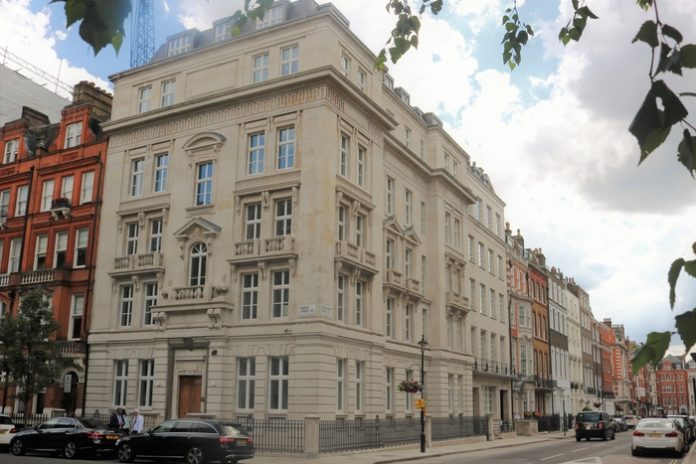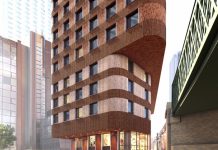The Howard de Walden Estate has announced its return to historic office, 23 Queen Anne Street, Marylebone, this month following a substantial refurbishment.
The building has been The Howard de Walden Estate’s headquarters in various guises since the late 1800s. In 1882 it became the office for what was then the Portland Estate, before becoming the Howard de Walden Estate in 1901. That office was completely rebuilt in 1936. Howard de Walden returns in August 2021 to occupy the entire building, excluding one floor. The site will be home to its c.120 employees.
Over the past two years the building has undergone a significant renovation by architects Morrow + Lorraine. The work has seen the previously cellular working space converted to a fully open plan environment, with collaborative space and improved staff facilities.
Situated across two characterful period properties, the head office refurbishment showcases a combination of heritage preservation with new low carbon, sustainable design features and modern technology. In reworking and extending 23 Queen Anne Street, the project team has created an improved, maximised floor area and modernised office space, while retaining many of the building’s period features, original structure and façade.
The project saw the office space increase from approximately 23,000 sq ft to around 30,000 sq ft, an increase of almost 7,000 sq ft. Rear and roof extensions provide characterful workspaces, while the reception area has doubled in size to serve as a welcoming entrance to visitors and staff alike.
The renovation has brought fresh energy to the building, allowing for open-plan working, with new staff break-out areas, collaborative working zones, and two planted roof terraces, as well as enhanced cycle storage, which will help promote a healthier commute to and from the office.
The project had a dedicated environmental focus from the outset, aiming to create an all-electric, BREEAM-certified office, drawing upon biophilic design, wellness, and collaboration.
The office will feature solar power and air source heat pumps, newly planted trees and native, nectar-rich flowers, fed by a rainwater harvesting system. There will also be on-site beehives, bird and insect boxes, all bolstering Marylebone’s wildlife and biodiversity.
In addition, the furniture has been sourced from local provider and Howard de Walden Estate resident, Dr Greg Lavery, CEO of Rype Office. The supplier provides remanufactured office furniture, helping to reduce greenhouse gas emissions and product waste.
Mark Kildea, Chief Executive Officer at Howard de Walden commented:
“We are delighted to be returning to our historic home following a two-year hiatus and are really excited by what this refurbishment has achieved. The site has been part of our history since the 1880s so a huge amount of care and time has gone into creating something that will last. 23 Queen Anne Street really demonstrates the marriage of heritage preservation with modern design and sustainable initiatives, which is something we aim for in many of the buildings across the estate.
“While the pandemic has disrupted office working for the last year, it has also highlighted the importance of good quality environments to work in. I’m looking forward to welcoming back our colleagues.”
Julian Morrow, Director at Morrow + Lorraine added:
“Morrow + Lorraine worked closely with the Howard de Walden Estate to refine the brief, develop an elegant, contemporary design aesthetic and realise the ambitious refurbishment and extension of their existing HQ. We focused upon high quality, locally sourced, natural materials which would enhance the existing built fabric and reflect the inherent qualities of the Estate.
“Picking up on stonework found within the existing building, the material palette complements the detail and finesse found within the existing building and by enlarging the floor plates, the office space has been refurbished to create a modern way of working within a flexible, open plan office environment drawing upon principles of biophilic design, wellness and collaboration.”



















